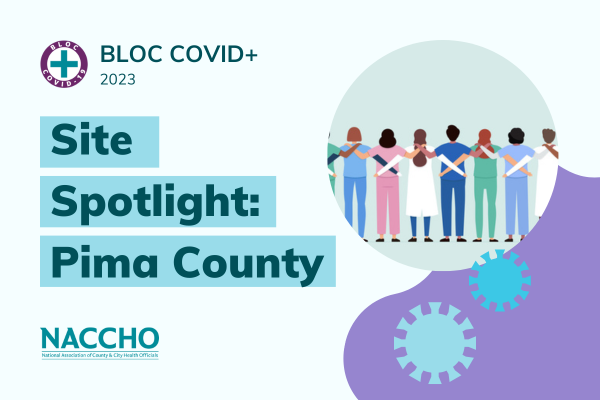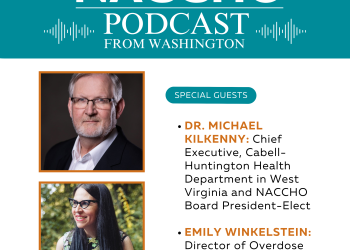The Building Local Operational Capacity for COVID-19, Healthcare-Associated Infections, and Antimicrobial Resistance (BLOC COVID-19+) project continues and expands upon the first year of the BLOC COVID-19 Demonstration Site project by allowing LHDs to go beyond COVID-19 response and address other HAIs and AR pathogens.
The goals of the BLOC COVID-19 + project are to:
- Strengthen relationships between LHDs and facilities and partners;
- Enhance LHD capacity and confidence in assessing and supporting infection prevention and control (IPC) practices in high-risk facilities;
- Improve implementation of IPC in high-risk facilities; and
- Decrease rates of and negative outcomes associated with COVID-19, HAIs, and AR pathogens in those facilities.
We asked our BLOC COVID+ sites to reflect on their experiences and lessons learned since joining our project. Here is what one of our sites, Pima County, shared with us. A standalone version of their blog post can be found here.
Lessons Learned from COVID-19
“The Pima County Health Department learned many lessons from the COVID-19 pandemic, but two of the most crucial ones were the importance of infection control and the importance of strong community partnerships. Nowhere were these principles highlighted more than with our long-term care facilities. The strong partnerships with over 340 long-term care facilities in Pima County can assist in many areas of preparedness, including pandemic influenza planning, medical surge management, and of course infection control and prevention.”
Building Capacity and Expertise in Infection Control
“Prior to COVID-19, our department lacked subject matter expertise in infection control and prevention outside of our food-borne and vector-borne diseases. We identified the need to increase our staff’s capacity to take on infection control and provide more in-depth support to our long-term care facilities, as well as other congregate facilities such as homeless and migrant shelters. That said, reaching this goal has not always been easy. We have struggled, as have departments across the US, with post-COVID workforce turnover. We remain with over 20% staff vacancies across the department. This has created some stops and starts in reaching our goal, and has made capacity building, increased training, and programmatic continuity more difficult.
We did have success working across divisions with both our Epidemiology (Epi) team and Consumer Health and Food Safety (CHFS) team. Working with other divisions within our health department helped provide ongoing support for this work. Together, the Epi, CHFS, and Public Health Emergency Preparedness (PHEP) divisions created the Infection Control Team. This involves working together to prevent and respond to outbreaks in congregate facilities. This work will continue beyond the life of the grant. Their next step will be creating standard operating procedures for the team and outlining roles, as well as determining appropriate triggers for activation of the Health Emergency Operations Center to respond to an outbreak.
Another success is the interest in training on infection control. Initially we were hoping to have 1-2 people sit for the Certification in Infection Control (CIC) exam. We were pleased and shocked, however, to have 13 people interested in testing! Epi formed a study group for everyone to study together in preparation for the exam.”
Community Partnerships
“Outside of the department, the COVID-19 response opened the door to building relationships that hadn’t existed before, and it increased our ability to disseminate resources and education to our community partners. The regular congregate care call that was created during that response has been essential in maintaining those relationships over time, as well as increased our ability to promote infection control education and support in congregate settings. Participation from Epidemiology allowed for regular COVID-19 updates to metrics, various changing ICP guidelines and rapid outbreak response when facilities experienced disease transmission.
Rebuilding staffing and infection control training will be ongoing work but increasing capacity within the department over the last year will have a long-term positive impact for our county, as it has improved preparedness and added an additional resource that we can provide the community.”



